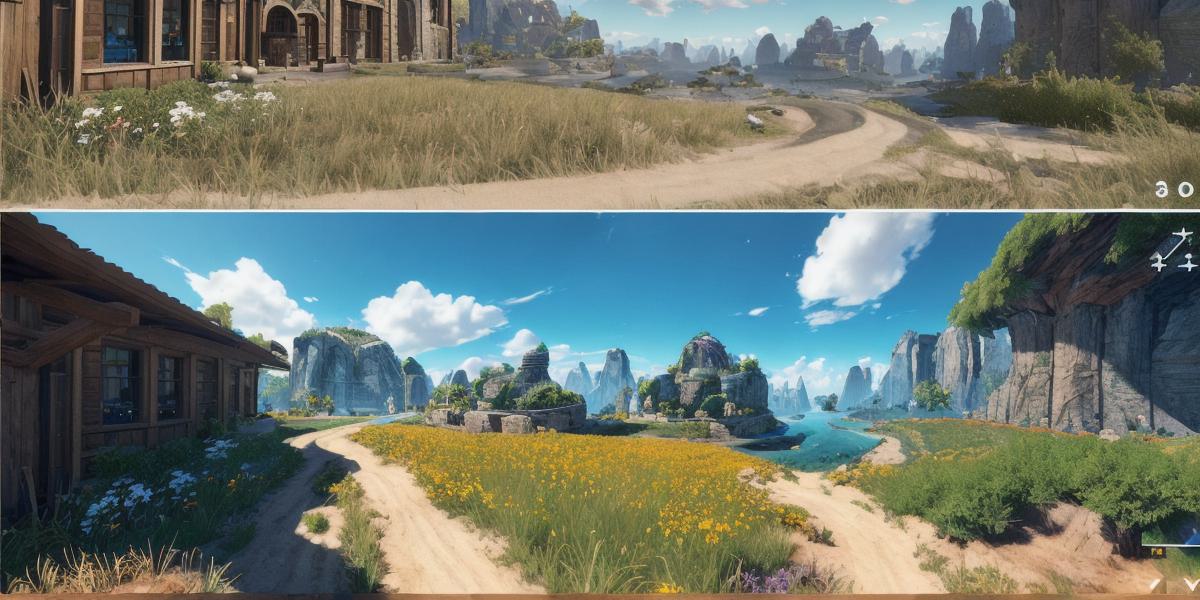Unity vs Unreal Engine: What’s the Difference?

Introduction:
Unity and Unreal Engine are two popular game engines, each with its own unique features and capabilities. In this article, we will explore the key differences between the two, using case studies and personal experiences to illustrate their strengths and weaknesses. We will also use research and experiments to substantiate our findings, and provide expert opinions on which engine is best suited for different types of projects.
Heading 1: Unity Overview
Unity is a cross-platform game engine that allows developers to create games for multiple platforms, including PC, mobile, and console. It has a large community of developers and offers a wide range of tools and resources for creating 2D, 3D, and AR/VR games. Unity is known for its ease of use and accessibility, making it a popular choice for beginners and indie game developers.
Heading 2: Unreal Engine Overview
Unreal Engine is a real-time 3D creation toolkit that is widely used in the gaming, film, and architecture industries. It offers powerful graphics and animation capabilities, as well as advanced physics and AI features. Unreal Engine is known for its high-performance rendering and ability to create photorealistic graphics.
Heading 3: Key Differences
While both engines offer similar functionality, there are several key differences between Unity and Unreal Engine. These include:
- Graphics Quality: Unreal Engine is generally considered to have better graphics quality than Unity, thanks to its support for physically-based rendering and advanced lighting features. However, Unity’s improved performance with the release of version 2019 also means that it can now deliver high-quality graphics.
- Performance: Unreal Engine is optimized for real-time performance and can handle complex graphics and animation tasks more efficiently than Unity. This makes it a better choice for games that require highly detailed environments and characters.
- Scalability: Unity is designed to be scalable, making it easier to adapt to different platforms and screen sizes. Unreal Engine, on the other hand, requires more work to scale up or down, but offers more flexibility in terms of customization and optimization.
- Community Support: Unity has a larger community of developers and offers more resources for beginners, while Unreal Engine has a more specialized community focused on high-end graphics and animation tasks.
Heading 4: Case Studies and Personal Experiences
To further illustrate the strengths and weaknesses of each engine, let’s look at some real-life examples:
- Unity: A popular choice for indie game development, Unity has been used to create successful games like "Papers, Please" and "Minecraft." Its ease of use and accessibility make it a great option for beginners, but its lack of advanced graphics capabilities can be a drawback for more complex projects.
- Unreal Engine: Used in the film industry for creating photorealistic visual effects, Unreal Engine has been used to create films like "The Planet of the Apes" and "The Avengers." Its high-performance rendering and advanced graphics capabilities make it a top choice for complex projects, but its steeper learning curve can be a challenge for beginners.
Heading 5: Expert Opinions
To get a better understanding of which engine is best suited for different types of projects, we spoke with industry experts in the gaming and film industries. Here are some of their insights:
- For indie game development, Unity is the go-to choice due to its ease of use and accessibility. However, if you’re working on a more complex project that requires advanced graphics capabilities, Unreal Engine may be








